Xianpeng Wang
AI-empowered Channel Estimation for Block-based Active IRS-enhanced Hybrid-field IoT Network
May 20, 2025Abstract:In this paper, channel estimation (CE) for uplink hybrid-field communications involving multiple Internet of Things (IoT) devices assisted by an active intelligent reflecting surface (IRS) is investigated. Firstly, to reduce the complexity of near-field (NF) channel modeling and estimation between IoT devices and active IRS, a sub-blocking strategy for active IRS is proposed. Specifically, the entire active IRS is divided into multiple smaller sub-blocks, so that IoT devices are located in the far-field (FF) region of each sub block, while also being located in the NF region of the entire active IRS. This strategy significantly simplifies the channel model and reduces the parameter estimation dimension by decoupling the high-dimensional NF channel parameter space into low dimensional FF sub channels. Subsequently, the relationship between channel approximation error and CE error with respect to the number of sub blocks is derived, and the optimal number of sub blocks is solved based on the criterion of minimizing the total error. In addition, considering that the amplification capability of active IRS requires power consumption, a closed-form expression for the optimal power allocation factor is derived. To further reduce the pilot overhead, a lightweight CE algorithm based on convolutional autoencoder (CAE) and multi-head attention mechanism, called CAEformer, is designed. The Cramer-Rao lower bound is derived to evaluate the proposed algorithm's performance. Finally, simulation results demonstrate the proposed CAEformer network significantly outperforms the conventional least square and minimum mean square error scheme in terms of estimation accuracy.
High-performance Power Allocation Strategies for Active IRS-aided Wireless Network
Nov 10, 2023Abstract:Due to its intrinsic ability to combat the double fading effect, the active intelligent reflective surface (IRS) becomes popular. The main feature of active IRS must be supplied by power, and the problem of how to allocate the total power between base station (BS) and IRS to fully explore the rate gain achieved by power allocation (PA) to remove the rate gap between existing PA strategies and optimal exhaustive search (ES) arises naturally. First, the signal-to-noise ratio (SNR) expression is derived to be a function of PA factor beta [0, 1]. Then, to improve the rate performance of the conventional gradient ascent (GA), an equal-spacing-multiple-point-initialization GA (ESMPI-GA) method is proposed. Due to its slow linear convergence from iterative GA, the proposed ESMPI-GA is high-complexity. Eventually, to reduce this high complexity, a low-complexity closed-form PA method with third-order Taylor expansion (TTE) centered at point beta0 = 0.5 is proposed. Simulation results show that the proposed ESMPI-GA harvests about 0.5 bit gain over conventional GA and 1.2 and 0.8 bits gain over existing methods like equal PA and Taylor polynomial approximation (TPA) for small-scale IRS, and the proposed TTE performs much better than TPA and fixed PA strategies using an extremely low complexity.
ETO Meets Scheduling: Learning Key Knowledge from Single-Objective Problems to Multi-Objective Problem
Jun 26, 2022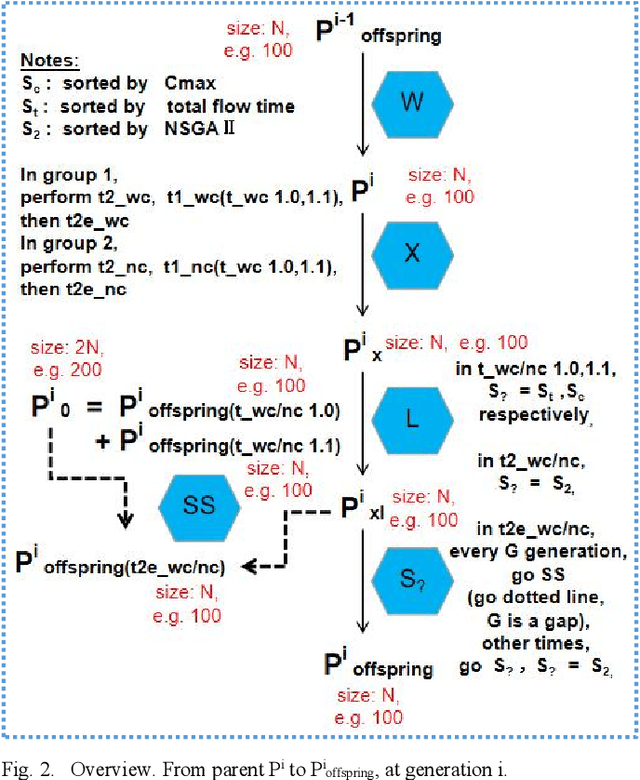
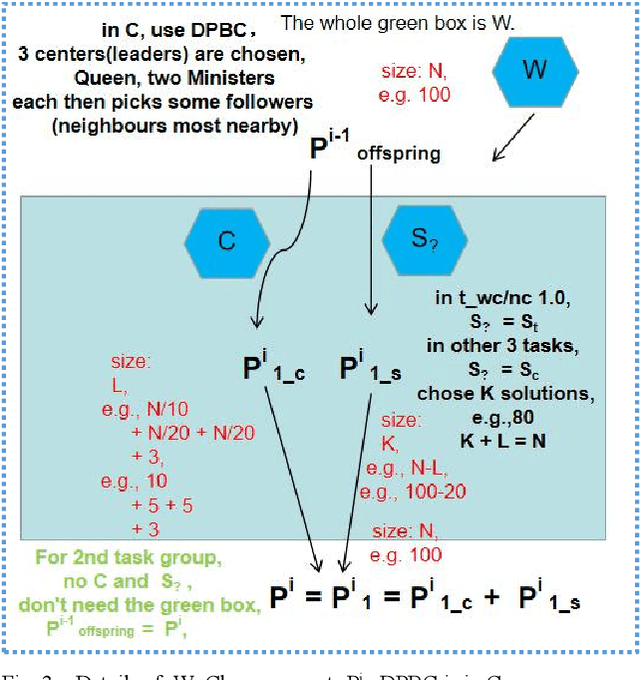
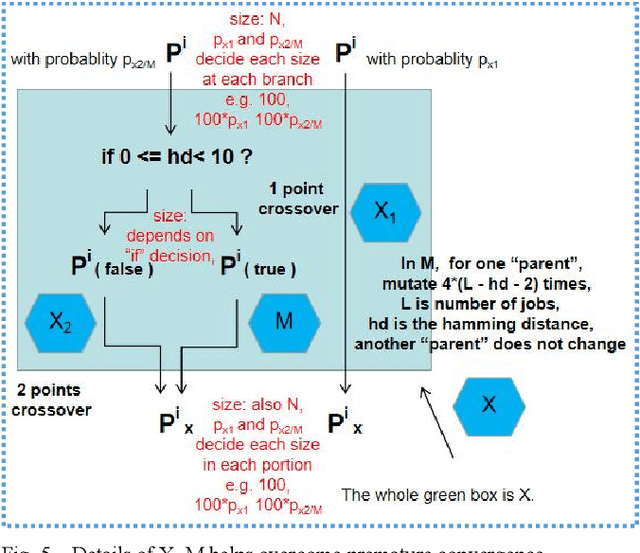
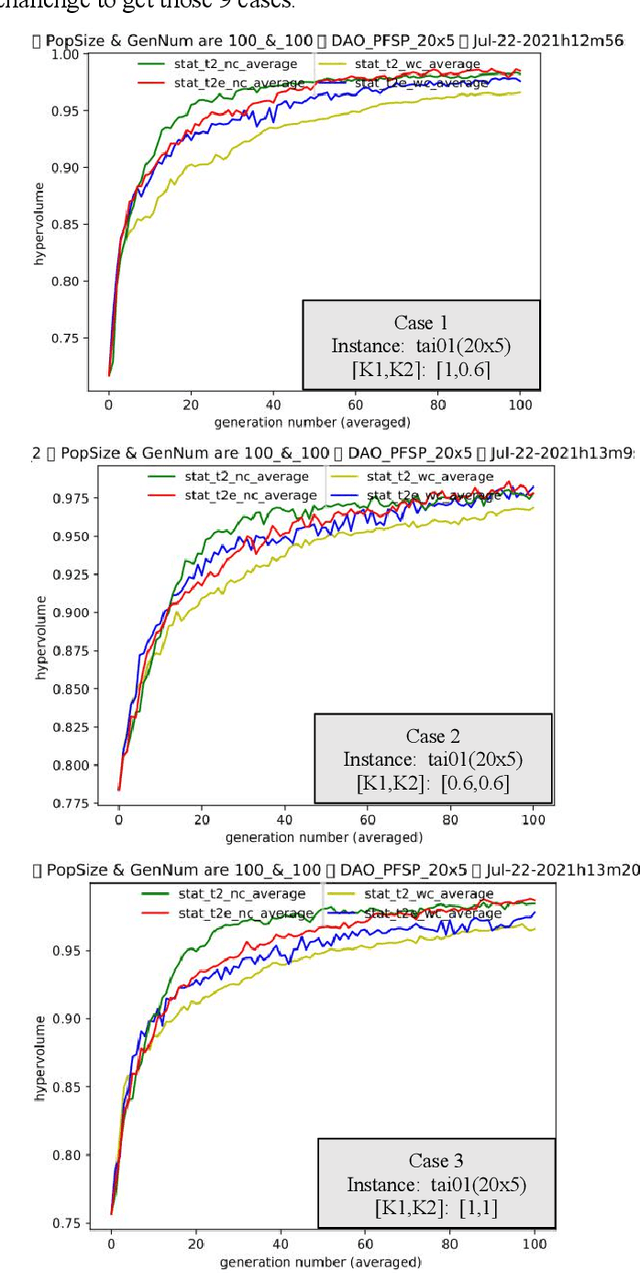
Abstract:Evolutionary transfer optimization(ETO) serves as "a new frontier in evolutionary computation research", which will avoid zero reuse of experience and knowledge from solved problems in traditional evolutionary computation. In scheduling applications via ETO, a highly competitive "meeting" framework between them could be constituted towards both intelligent scheduling and green scheduling, especially for carbon neutrality within the context of China. To the best of our knowledge, our study on scheduling here, is the 1st work of ETO for complex optimization when multiobjective problem "meets" single-objective problems in combinatorial case (not multitasking optimization). More specifically, key knowledge like positional building blocks clustered, could be learned and transferred for permutation flow shop scheduling problem (PFSP). Empirical studies on well-studied benchmarks validate relatively firm effectiveness and great potential of our proposed ETO-PFSP framework.
Spatial Modulation: an Attractive Secure Solution to Future Wireless Network
Mar 06, 2021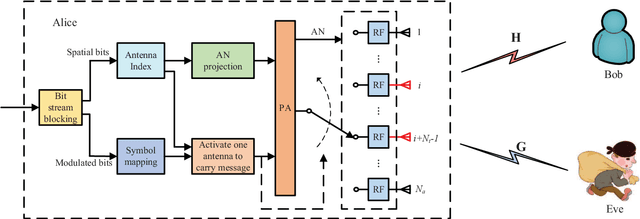
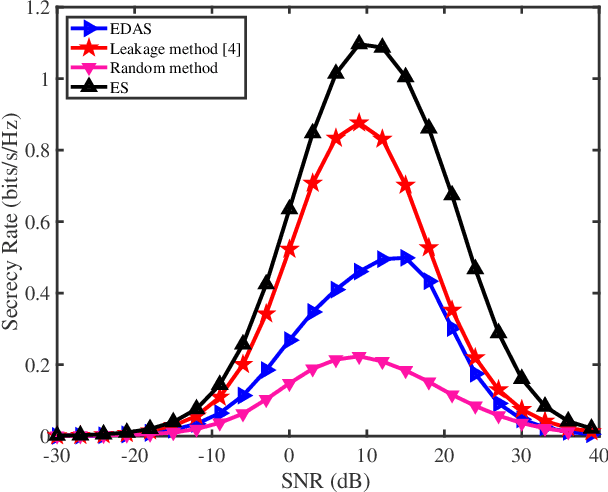
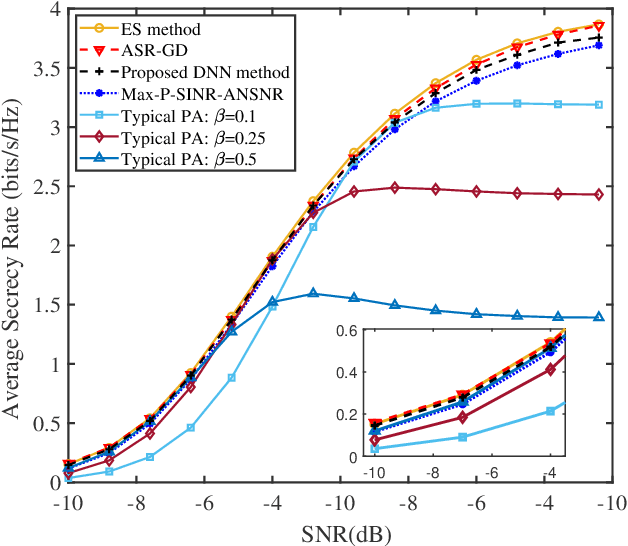
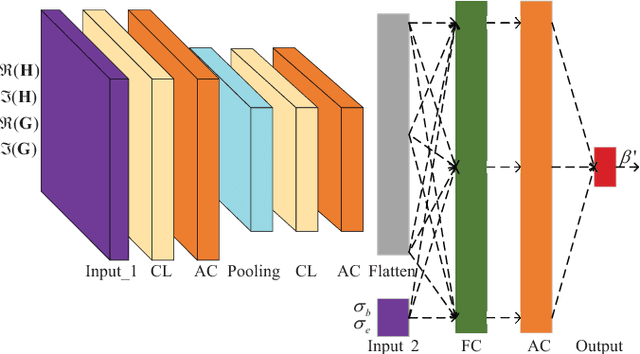
Abstract:As a green and secure wireless transmission method, secure spatial modulation (SM) is becoming a hot research area. Its basic idea is to exploit both the index of activated transmit antenna and amplitude phase modulation signal to carry messages, improve security, and save energy. In this paper, we review its crucial challenges: transmit antenna selection (TAS), artificial noise (AN) projection, power allocation (PA) and joint detection at the desired receiver. As the size of signal constellation tends to medium-scale or large-scale, the complexity of traditional maximum likelihood detector becomes prohibitive. To reduce this complexity, a low-complexity maximum likelihood (ML) detector is proposed. To further enhance the secrecy rate (SR) performance, a deep-neural-network (DNN) PA strategy is proposed. Simulation results show that the proposed low-complexity ML detector, with a lower-complexity, has the same bit error rate performance as the joint ML method while the proposed DNN method strikes a good balance between complexity and SR performance.
 Add to Chrome
Add to Chrome Add to Firefox
Add to Firefox Add to Edge
Add to Edge